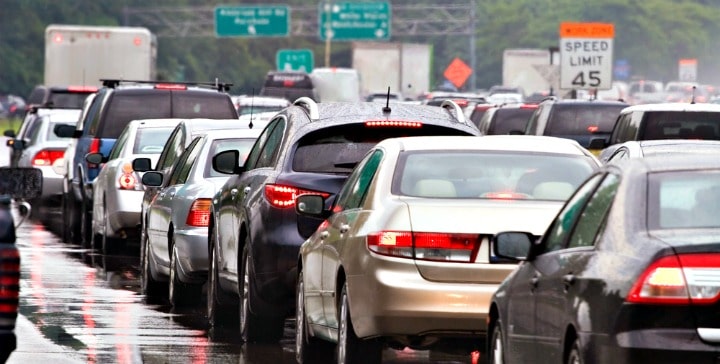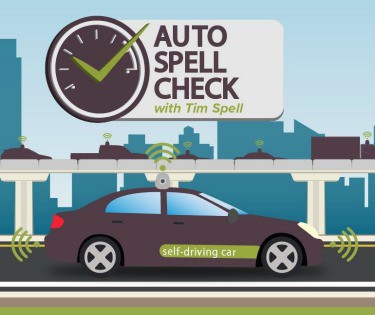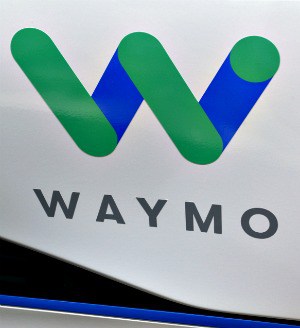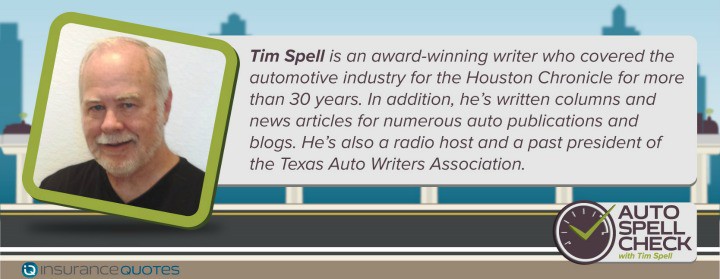Do Driverless Cars Mean the End of Traffic?

Traffic congestion is a growing problem, and autonomous cars have the potential to play an important role in the solution. Researchers have found that ride- and car- sharing, coupled with automated-vehicle efficiency, can significantly help maintain traffic flow.
Among the first real-world applications of autonomous vehicles are ride-hailing services such as Uber, Lyft and Waymo. Widespread success of these services is critical if research by SBD automotive technology research specialists is on point. According to SBD “the number of the cars on the road is expected to double to 2 billion globally by 2030. In parallel, millions of people continue to flock toward already-congested cities.”

A research team from MIT and Uber has studied ride sharing in 30 global cities and evaluated the potential effect of shared self-driving mobility systems. The study finds that ride-sharing services have experienced “incredible growth” and can reduce city traffic by boosting car-transportation efficiency, which has been limited to a 1.2-passenger average.
“Ride sharing has immense potential to reduce traffic in cities,” says Carlo Ratti, professor of the practice at the MIT Department of Urban Studies, who adds the possibility of car sharing to the solution. “With self-driving vehicles hitting our roads, car- and ride-sharing could become increasingly popular, defining new mobility systems in-between public and private.”
SBD research indicates that cars becoming more autonomous could make car sharing “significantly easier … allowing cars that are not in use to distribute themselves efficiently to match demand. A drop-in vehicle ownership may therefore (in theory) help to reduce traffic congestion.”
Related: What Driverless Car Features Are Available Today?
Leading transportation experts were respondents in a survey by the Institute of Transportation Studies at UC Davis regarding the university’s new policy initiative — “3 Revolutions: Sharing, Electrification and Automation.”
Among the survey’s highlights is that “88 percent think commercially offered shared rides will make up more than 5 percent of all U.S. passenger miles by 2030, and 78 percent think commercially offered shared rides will account for more than 20 percent of U.S. passenger miles traveled by 2040.”
 Sharing rides in automated cars void of driver shortcomings optimizes traffic-congestion prevention. Research by the University of Illinois College of Engineering finds that stop-and-go traffic by human-driven vehicles can be eliminated by the presence of a few autonomous vehicles.
Sharing rides in automated cars void of driver shortcomings optimizes traffic-congestion prevention. Research by the University of Illinois College of Engineering finds that stop-and-go traffic by human-driven vehicles can be eliminated by the presence of a few autonomous vehicles.
“Our experiments show that with as few as 5 percent of vehicles being automated and carefully controlled, we can eliminate stop-and-go waves caused by human driving behavior,” says Daniel Work, assistant professor at the University of Illinois at Urbana-Champaign. “The use of autonomous vehicles to regulate traffic flow is the next innovation in the rapidly evolving science of traffic monitoring and control.”
Work’s team conducted a field experiment in which a single automated vehicle continuously circled a track with at least 20 human-driven cars.
“Under normal circumstances, human drivers naturally create stop-and-go traffic, even in the absence of bottlenecks, lane changes, merges or other disruptions,” he says. “This phenomenon is called the ‘phantom traffic jam.’”
A solution to the problem was found in which traffic flow was smoothed out by controlling the autonomous vehicle’s pace.
Autonomous vehicles aren’t vulnerable to common driver reactions that disrupt traffic. Driverless cars don’t rubberneck and will maintain a proper speed at an accident scene to eliminate slow-downs. Poor driving decisions resulting from fatigue, impatience and anger also are prevented.
CHECK OUT: Men, Millennials Most Likely to Embrace Driverless Cause
Leading causes of major freeway traffic jams are auto accidents, and the National Highway Traffic Safety Administration reports 94 percent of auto crashes can be attributed to human error. “We need to focus our efforts on improving human behavior while promoting vehicle technology that not only protects people in crashes, but helps prevent crashes in the first place,” says NHTSA Administrator Mark Rosekind.
Automated vehicles have the potential of removing human error from the crash equation. Driver-assist systems in production vehicles, which include elements of autonomous technology, are reported to reduce auto accidents. For instance, NHTSA reports that crash rates involving Tesla cars have dropped almost 40 since the introduction of its semiautonomous Autopilot technology.
Subaru reports that its vehicles equipped with EyeSight Driver Assist Technology are 60 percent less likely to be involved in a crash than those without. EyeSight safety features include: Adaptive Cruise Control, Lane Keep Assist and Sway Warning, Pre-Collision Braking and Pre-Collision Throttle Management. Volvo’s Vision 2020 goal is notably ambitious. Volvo states: “Vision 2020 is about reducing the number of people that die or are seriously injured in road traffic accidents to zero.”
The melding of driverless cars into our motoring culture is in an uncertain, awkward stage. Critics contend that a poorly executed introduction of automated vehicles will add to traffic congestion. A concern by the Public Transport Users Association is “If robot cars really do make traveling by car more attractive … then people will rationally respond by traveling more, and by traveling further. Just as with the attempt to reduce congestion by building more roads, robot cars may simply encourage enough further growth in travel to wipe out any congestion relief that may occur.”
SBD’s view is that the longer-term — 20-50 years — effect of autonomous vehicles is easier to forecast. It projects that autonomous vehicles will become ubiquitous and manual driving will be restricted. “At that stage, central management of all vehicle movements will become feasible, and alongside the elimination of traffic accidents, congestion will become a distant memory.”

